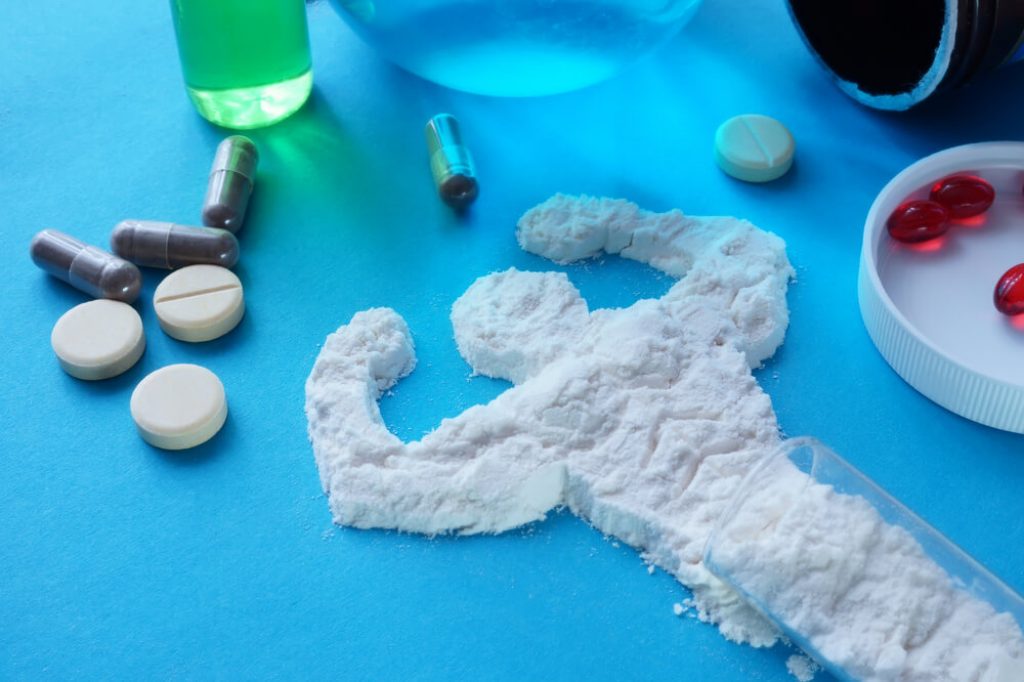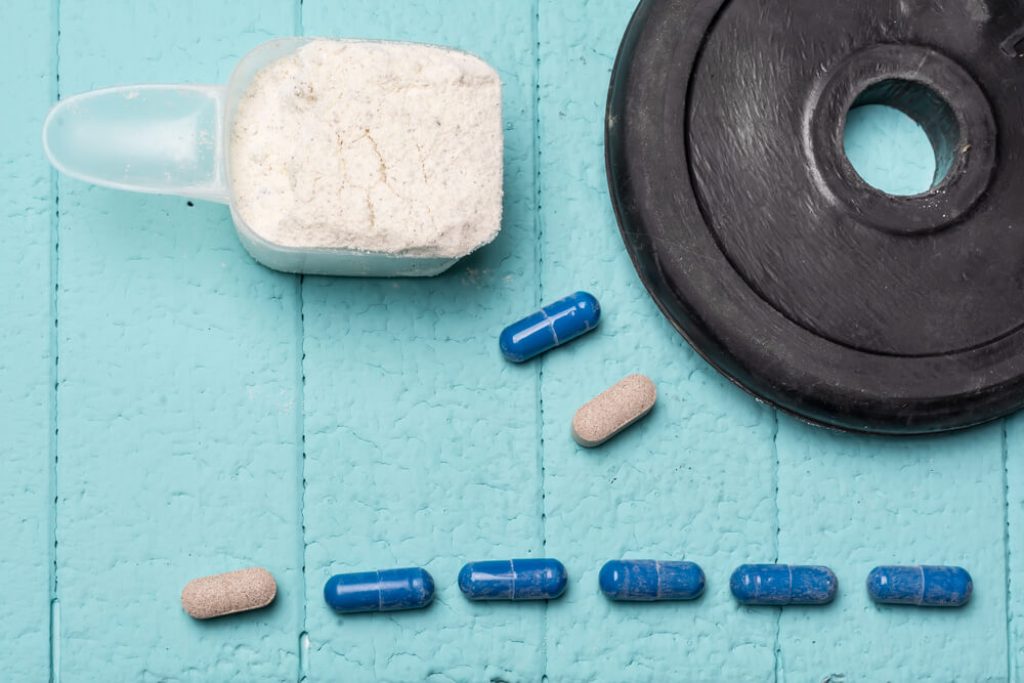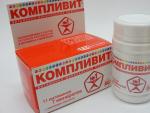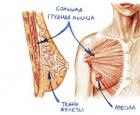How to take creatine - everything you need to know
Creatine is a supplement often used by those looking to build muscle. As for the effectiveness of this supplement, rumors circulate, speculation wanders, doubts hover and a lot of questions arise. How does it work and how to take it?
We will answer your questions and more.
If you look into a sports nutrition store and read the names of some fitness supplements on the labels, it becomes clear that you did not attend biology classes at school. What can you remember about creatine? Well, this is what I'm talking about.
Creatine is one of the most well-known weightlifting and marketed supplements. Its popularity is justified. Creatine is one of the safest and most effective supplements. However, not everyone who drinks it understands what the essence of this supplement is, how to properly take creatine to gain muscle mass and in what dosages. From here in more detail.
Creatine, from a biological point of view, is an organic acid that is produced by the body. Its purpose is to provide the body with adenosine triphosphate (ATP). ATP provides the body with a short-term boost of energy and strength.
Here's how it works: Creatine is converted to phosphocreatine, which in turn produces ATP. When the body is under stress, as during exercise, ATP is released, supplying the body with additional energy.
This process may seem simple, but that is creatine in its basic form. In fact, there are many types of creatine, such as krealkalin. Each has its own advantages and disadvantages.
The best creatine and its most popular types
You will also be interested to know which ones exist and why to use it.
Creatine Monohydrate
Creatine monohydrate is the most sold and used form of creatine. This is the original type of creatine and has some disadvantages. For example, some people may experience bloating or other minor side effects.
Creatine hydrochloride
This form of creatine is said to eliminate the side effects of creatine monohydrate. However, there are no studies to prove that this is true. What has been proven is that creatine hydrochloride is more water soluble and is taken at a lower dose.
Micronized Creatine
Micronized creatine is essentially the same product as creatine monohydrate. It is only produced in the form of a crushed powder, which, according to manufacturers, improves water solubility and absorption into the body. How to drink creatine monohydrate powder, read below.
Creatine ethyl acetate
This supplement is a combination of creatine and an ester. Although not as well studied, many argue that it is not very different from creatine monohydrate.
Buffered Creatine
Buffered creatine is magnesium fortified creatine that improves the absorption of creatine by the body. According to the manufacturers, this supplement is able to remove the by-product of creatine creatinine.
The consistency of creatine supplements varies, for example, it is available in the form of tablets, capsules, powder or liquid. Of course, it is up to you to decide which form of release of the supplement to recognize and take, because each of them has its own advantages and disadvantages.
Liquid creatine most often tastes good and pleasant, but is not considered by many to be very effective. Powdered additive is the most popular and easily soluble in any drink. Creatine tablets are slow to digest, but this may be an advantage for some people.
Why is creatine so popular?
Creatine is popular because it is one of the most purchased supplements on the market. There have been countless studies proving that creatine provides a boost of energy and strength for a short period of time, reduces fatigue and increases muscle mass. Simply put, it will increase the duration and effectiveness of your workout and is considered one of the best muscle building supplements.
Other than that, cretin is considered to be the safest supplement you could find. A number of studies have been conducted to identify the potential harms of taking this supplement, but the results of almost every one of them indicate a relatively small risk associated with taking creatine. Creatine is considered the most studied supplement, and to date there is no evidence of its harm.
Another reason for the popularity of creatine is that it has a beneficial effect on the human brain.
Why?
Cells like neurons need a lot of energy. When these brain cells receive additional energy from the increase in creatine, the brain begins to work better, namely: increased intellectual potential and memory.
Creatine is usually inexpensive, but its effectiveness is very high. That is why most beginner weightlifters prefer this particular supplement.
Unlike other inexpensive supplements, creatine works. He brings results and does it quickly enough. If you want to build muscle quickly, efficiently and without much investment, choose this particular supplement.

How to take creatine correctly?
Another important aspect that requires special attention is the question of how to drink creatine. If it is taken incorrectly, the effect of the supplement is reduced at times or not at all. And yet, how to use the supplement for gaining muscle mass?! Go!
How to consume creatine during the loading phase
During the loading phase, creatine is taken in a large dose for a short period of time. The download usually takes 1-2 weeks. For maximum effectiveness, about 20-25 grams daily is recommended for the first 5 to 7 days. This amount of supplement should be divided into several doses per day. Why? Daily intake will enrich your body and muscles with creatine completely.
Some people choose to take a smaller dose of creatine during the loading phase. They do this in hopes of avoiding excessive fluid buildup in the body and problems with the digestive tract. If this scenario is not to your liking, then you should use 10-12 grams per day, divided into small doses, for 10-14 days. Such a loading phase will reduce the initial effectiveness of the supplement, however, the benefits of taking such a dose of creatine will not decrease.
The loading phase is initially aimed at getting the most benefit from creatine, although some people do without this phase.
Why?
The reason for this is that under the influence of creatine in the body, the process of fluid accumulation begins. Elevated fluid levels can lead to swelling and problems with the digestive tract. However, studies have shown that creatine does not cause these symptoms on a physiological level, since water is retained directly in the cells, and not in tissues and organs.
Although the effectiveness of the additive will be reduced, however, this phase can be skipped.
How to drink creatine during the maintenance phase
The maintenance phase follows immediately after the loading phase.
How long should I take creatine during this phase? - This period lasts about a month.
How much to consume per day at this stage? - During this time, the dose of creatine should gradually decrease and reach 3-5 g per day.
During this phase, your muscles will be saturated with creatine accumulated during the loading phase, if you had it, of course. The maintenance phase is needed in order to replenish the creatine reserves that you lose during the day or during training.
Research shows that once muscles have had their fill of creatine during the loading period, they only need 3-5 grams of creatine per day. This means that if you still continue to take high doses of creatine, your muscles will still not absorb it, and all the excess will simply disappear as unnecessary. And you don't need it.
All about the washout phase
The washout phase is the period during which creatine is discontinued. This phase allows your body to get rid of excess creatine and is very important. During this time, your body indicators return to their normal values.
Why?
Extended periods of creatine supplementation without a washout phase will reduce the effectiveness of the supplement and may lead to potential health risks.
The washout phase should last about 4 weeks. This four-week period is needed by the body to restore its normal performance. After 4 weeks, start again with the loading phase, after which proceed to the maintenance phase.
Most of the recent research concludes that the washout phase is useless as there is no training benefit. Some argue that creatine cycling reduces its effectiveness. Creatine is usually most effective when the muscles are saturated. And during the cyclic intake of creatine, the muscles do not have enough time to be saturated enough, and because of this, its effectiveness decreases.
When and how best to take?
This is one of the most frequently asked questions about when is the best time to take creatine. Some people think that it should be taken before training. Others claim that taking creatine after a workout increases its effectiveness.
When you take the supplement is, of course, up to you, but it is recommended during the loading phase to drink it in equal portions throughout the day. During the maintenance phase, the dose of creatine is lower, and it is recommended to take it in equal proportions before and after training.
Why?
This will allow your muscles to fully saturate, ensuring that the creatine used during the workout is fully recovered after it.
Indications for use
Creatine is one of the preferred supplements for most athletes due to its ability to increase performance and energy and reduce fatigue. It is very useful for people leading an active and sporty lifestyle. It is especially useful for those involved in sports that require short, repetitive and powerful movements. These are sports such as weightlifting, baseball, golf or football. The use of creatine by athletes will help them enjoy an additional boost of energy and strength, as well as good performance.
It is also suitable for those athletes whose sports are related to endurance testing. For example, this supplement may help a marathon runner reduce fatigue and recover faster. Anyone who has run long distances knows what it's like to feel tired too soon. The right choice for creatine, as it can help in this matter.
It is useful not only for weightlifters and athletes. Dozens of clinical studies have proven a direct link between creatine and the brain. This means that the supplement is able to improve the brain function of even an ordinary person. It is used as a remedy for depression throughout the world, although the link between creatine and this mental disorder has not been scientifically established.
Why?
It improves brain function and bone and muscle health.

Some myths about creatine
“Creatine harms the liver and kidneys.”
This myth arose because creatine creates a by-product called creatinine. Doctors check creatinine levels when examining the health and function of the kidneys. Usually, when creatinine levels are elevated, the problem is not the supplement, but the presence of a medical condition.
“Creatine doesn't make muscles big. It only contributes to the accumulation of fluid.”
During the first two weeks, this statement will be considered true. During the loading phase, the body begins to retain fluid. After this stage, creatine begins to act at full capacity, increasing the size of muscle fibers, their specific gravity and density.
“Nerd causes dehydration.”
This statement has been around for a long time. Many are afraid to take a supplement for fear of dehydration. Of course, this statement is just a myth. As mentioned above, creatine promotes fluid retention in the body. With what you can drink creatine, read on.
“Creatine causes stomach pain.”
There is a small caveat to this assertion. Yes, many people complain of stomach pain when taking a supplement, but the main reason for this is the wrong dosage or frequency of creatine intake. If you are not eating right and taking a lot of creatine, then you will not be able to avoid abdominal pain. Follow the recommendations and stomach pain will not be a problem for you.
Conclusion
It is also worth mentioning what to drink creatine with. For maximum effectiveness, it is recommended to consume the supplement along with fruit or vegetable juice.
Why?
The reason for this is that creatine is better absorbed by the body with a sharp rise in insulin. The juice contains glucose and carbohydrates that the body needs to absorb creatine.
Although creatine is considered a relatively safe product, the instructions for using creatine on the package will be useful for review. If you experience any side effects while taking creatine, stop taking it immediately and contact your healthcare provider.









 Fat Burning Cardio: Benefits, Program Options, Helpful Tips
Fat Burning Cardio: Benefits, Program Options, Helpful Tips 7 most effective exercises for breast lift at home - a complex for women and girls
7 most effective exercises for breast lift at home - a complex for women and girls How to pump up at home in the shortest possible time?
How to pump up at home in the shortest possible time? Technique and important tips for doing the exercise
Technique and important tips for doing the exercise